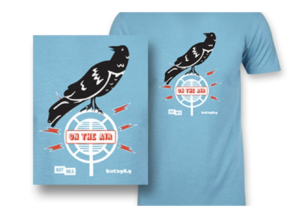When it comes to running a nonprofit organization, the importance of finding donors can’t be understated. In this article, we will detail 17 methods you can use to acquire more donations.
Get Donations Through Email
Email marketing is an extremely potent marketing channel that you should take full advantage of. If you want to start receiving donations for your nonprofit membership organization, you’ll need to run some email campaigns.
Don’t just send donation requests. Instead, engage in content marketing and provide valuable free resources people will be interested in. Look to inform, educate, and entertain. Your email campaigns should be of the drip variety—lengthy, strategically-planned autoresponder sequences. An email marketing platform like MailChimp can provide the technology to achieve this.
Here’s an example of an autoresponder sequence you can send:
- An onboarding email to new subscribers, welcoming them
- An overview email outlining what your nonprofit is all about and how donors make a difference and benefit from their involvement
- A case study email showing a specific issue/group/person your organization helps
You can combine this with weekly or monthly updates via a newsletter or blog posts. Email is a fantastic channel for keeping your members and donors informed. With most good email marketing platforms, you can set blog posts to be automatically emailed.
It’s imperative to make sure all your emails are mobile-friendly, which means they can be easily read on a smartphone. Most internet usage, including reading email, is done using mobile devices.
An effective email marketing campaign for your nonprofit organization will capture more leads and convert them. You’ll gain more members, more donors, and more fundraising dollars. Remember to include a link to donate — ideally in the form of a donation button — in your emails.
Embed Donation Forms
One of the most significant barriers to acquiring donors is simply how hard it is to do so. If an individual has to jump through multiple hoops, they’ll most likely give up.
You need to make it as easy as possible for people to donate to your nonprofit. One of the best ways to do that is to embed your donation forms throughout your website, rather than only having a separate page. Ideally, you should include both, as the page can provide more context for why donating is important. For example, you can have a donation campaign landing page where the fundraising form is embedded on the page as opposed to taking the donor to a separate page.
Doing this will make it easier for people to donate and will lead to greater conversion rates and ultimately more donations or memberships for your nonprofit organization.
Text Message Campaigns
Because of how active people are on their phones, using text messages can be effective in securing more donations. Smartphones are so heavily ingrained in our culture. It’s estimated that Americans check them 144 times every day.
If you have a contact list, there’s a good chance you will have their phone number. In the future, make it a point to collect this info if you can. With an extensive list of numbers, you can enact a text message campaign. If you do so, you can expect increased fundraising numbers.
Send Mail
Marketing and advertising predominantly occur online now, whereas in the past these things happened in person, by mail, on TV, or the radio. Those old channels still exist, but they’re not as prominent as they once were. TV and radio ads are expensive to place and produce and are much less targeted than Google or Facebook ads. You also have more control over how much you want to spend with online advertising; you can do smaller tests with online ads too.
However, since there isn’t as much competition for eyeballs in physical mailboxes these days, you may have a better chance of succeeding with snail mail. For donors in an older age bracket, they can have more trust in mailed appeals as opposed to online fundraising. Even today, sending physical mail is a winner for some nonprofits.
If you go this route, ensure you personalize your letter and appeal to their heart, not their brain. Donating is an emotional endeavor, not a logical one. Tell them a story and be dramatic. Tell the potential donors why you’re requesting funds, and explain your purpose for those funds.
Donations that are specific to a campaign are more successful than more generic appeals. If you can quantify the support their donation will provide, that can help them decide upon an amount and can be more compelling than unspecified asks. For example, you can create a list of donation amounts for a capital campaign:
- $1000 buys a new set of six lockers for our changing room
- $500 buys plumbing for our new hand washing station
- $100 buys three nap mats for our preschool
- $25 buys a set of coat hooks for each classroom
Blogs
Having an active blog on your website is a great way to attract more contributions from potential donors. It will allow you to rank on Google’s search engine for various keywords, bringing in organic traffic. Be sure that your blog gets readership by sharing blog links and content via social media and with your email list.
A blog also makes you look professional and allows you to give status updates to your members/donors. Those who have contributed will want to be kept in the loop about your nonprofit’s campaign efforts. Use various content types, like infographics, long-form guides, and videos. You can also invite board members and members to be guest bloggers so you don’t have to do all of the writing work. If you invite others to blog, be sure to advise them as to topics that would be of interest to your donors and members. Guest blogging can be a win-win in that you get help with content and your guest blogger enjoys a raised profile in the community.
Digital Incentives and Speciality Items
 Try offering incentives to your donors to reward them for their fundraising contributions. Acknowledging their efforts can be a powerful motivator. You can provide digital incentives as well as physical gifts (also known as speciality items). Some incentive ideas include:
Try offering incentives to your donors to reward them for their fundraising contributions. Acknowledging their efforts can be a powerful motivator. You can provide digital incentives as well as physical gifts (also known as speciality items). Some incentive ideas include:
- Badges – Ideas include profile frames on Facebook or images that can be added to email signatures or directory profiles).
- Branded mugs – This can include your organization’s logo and wording like, “I donated to…” or “I care about…”.
- Branded T-shirts – A good, creative design will compel donors more than just dropping your logo on a shirt, so consider hiring an artist or working with a screen printing shop who has an in-house artist. Display a picture of the design on your donation form to spark interest.
- Membership cards – These can be offered offered digitally or physically.
- Donor list recognition on social media, blogs or newsletters – Be sure to respect donor’s wishes to remain anonymous and provide a way for them to choose that option on your online donation forms.
- Guest posts and social media “takeovers” – Consider giving big donors or sponsors the opportunity to write a guest blog or newsletter article as long as it adheres to certain content parameters. A social media alternative would be to allow for an Instagram takeover for a day or something along those lines. You’ll need to use your judgement as to if to offer this incentive and whom to allow to take advantage of these opportunities. Be sure to write careful guidelines so that your donor or sponsor doesn’t make overt commercial appeals and follows the rules.
- Unique and special access to online content – Perhaps you have a special report that you only make available to members or donors? Members only content can be a powerful motivator if the content is good. If you run a nonprofit like a professional association, for example, the results of a salary survey could be highly sought after. Or perhaps only donors, sponsors and/or members get to see and/or be listed in your online member directory?
People often want to engage in philanthropic endeavors to help and sometimes also to be perceived as a good person. When they affiliate with your organization’s brand by wearing a shirt, using your mug at their office or by taking advantage of other incentives, they are demonstrating that they care. More importantly, they are also giving your organization publicity among their peers who are likely part of your organization’s target demographic.
Online Events
Hosting online events or delivering event content digitally can be a practical way to encourage more donations and memberships for your nonprofit or charity. If the COVID-19 pandemic has taught us anything, it’s that we can still stay connected, even from far away. Types of online events or digital events you could host include:
- Webinars
- AMAs (Ask me anything)
- Fireside chats
- Podcasts
- Live streams
- Online workshops
- Cooking, craft or mixology classes
- Self-paced audio tours that employ walking, bike or another form of transportation
- Virtual conferences/summits
- Virtual meetups
Some organizations are creatively recognizing donors and attendees at these events by sending care packages or supply kits to open during the event. A creative care package could include props or things to wear that make the online video experience more festive for the attendees. A museum art class could offer to ship supplies to attendees or have a day or two where registrants can pick up their kit in person. Some organizations are making arrangements with a local restaurant to deliver things like desserts, meal kits or drink kits to attendees. You can have tiered ticket levels with higher prices according to the goodies and conveniences offered. Most often these tickets are priced above cost so that a donation is essentially built into the ticket purchase.
Crowdfunding
Crowdfunding is an extremely effective way to get more donations for your nonprofit organization. While it initially gained popularity as a way to fund businesses, it has since gained value for nonprofit fundraising.
There are multiple benefits to crowdfunding, including:
- Minimal expenses
- Good ROI
- Brand awareness/exposure
Crowdfunding gives people power, which is highly attractive to donors. There are literally hundreds of crowdfunding platforms available, so you have plenty of options to choose from.
Social Challenges
Remember the ALS ice bucket challenge? It was an extremely successful social challenge that raised $220 million for ALS through various organizations and charities worldwide. This is an extreme example of how social challenges can supercharge fundraising.
As a nonprofit organization, think about trying to start a social challenge with the intent of it going viral. Be creative and make sure the challenge is fun. Don’t forget to use the right hashtags. Also, attach your donation form/link.
Social Media Campaigns
Social media is one of the major marketing and advertising channels in today’s digital world. As a nonprofit organization, it’s vital that you have a full-fledged social media strategy in place. You should try to post consistently across all appropriate social media platforms to target and engage your audience. As a nonprofit, the platforms you’ll use will likely include Instagram, Facebook, Twitter, and LinkedIn.
Try to automate your social media content strategically. To do this, you can use a social media management tools. This will make it easier for you to scale up your efforts and free up your time.
Recurring Monthly Donations
Having a recurring monthly donation option can be an effective way to boost your fundraising efforts. Often what’s limiting someone from becoming a member of your organization or giving to your charity is the amount of effort required to do so. If it’s hard to donate, they probably won’t bother.
People don’t want to be hassled continuously to fill out forms or receive letters and phone calls, and the amount of money they end up donating is insignificant (e.g. the cost of a lunch outing or a cup of coffee) to them much of the time. But small amounts add up when repeated over time and across many donors. Recurring donations also mean a more consistent cash flow—which makes budgeting and forecasting easier.
The appropriate membership software will allow you to set up recurring donations and memberships easily.
Celebrity Endorsement
Securing celebrity endorsements can be a tremendous advantage when it comes to bringing in more donations for your nonprofit organization. This is due to the powerful psychological concept known as “social proof,” which describes how people are influenced because of the actions and beliefs of others. In this case, people will mimic famous celebrities who have high numbers of fans and followers.
If you can get a celebrity to endorse your nonprofit organization, it’ll dramatically increase your fundraising efforts across the board. In today’s digital world, this endorsement will largely occur on social media. You don’t even have to target big celebrities—learn about influencer marketing and look to local celebrities who have clout among your target demographic.
Storytelling
Donors need to hear a story that will convince them to part with their money. They need to be confident of your nonprofit organization’s purpose—why you’re doing what you’re doing. Storytelling is a powerful narrative tool you can use to supercharge your donation request and fundraising efforts. Some of the most successful fundraising has occurred during sad events and natural disasters. Nonprofits who are in the business of aiding those who are experiencing adversity are most effective at garnering donations when they can tell a story of what is happening on the ground and how contributions will help. For example, they may be seeking donation to deliver food and water to those whose water supply has been tainted by floodwaters.
Paint a Picture
The content you display on your social media, blog, and email list should be powerfully emotive. You need to tell a story by painting a picture in people’s minds. When they read your content, they need to be able to visualize what you’re saying.
Doing this will increase the effectiveness of your content. You’ll get more views and greater engagement. Why? Well, when it comes to donating to a nonprofit, it’s largely an emotional decision.
Personalization Through Tailored Messages
It was once said that a person’s name is the sweetest sound they can hear. It’s been known for a very long time in advertising, sales, and marketing that personalization is extremely powerful. In fact, it’s been shown to do the following:
- Increase digital sales by 25%
- Boost open rates of emails by 29%
It’s essential that your marketing efforts regarding your donation requests take advantage of personalization. So, use people’s names when you send them an email. Remind them that you remember them. If they donated previously, mention it.
Try to personalize your marketing and advertising efforts in any and every way you can.
Create Urgency
When it comes to spreading the word about your fundraiser, try to use the power of urgency. Make it seem as though what you’re offering or seeking is only available for a limited time. This is an age-old copywriting technique commonly used in sales, advertising, and marketing.
If you don’t create a sense of urgency, your potential donors may hesitate and procrastinate. When this happens, they are not likely to end up donating. Ensure that you emphasize what will happen if your charity doesn’t raise the funds it needs. Sometimes it is appropriate to describe the potential negative outcomes of not meeting the goals of your nonprofit organization. You can frame them in a way so that your prospective donors can have the opportunity to “save the day.”




Comments are closed.